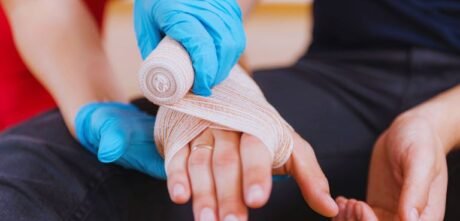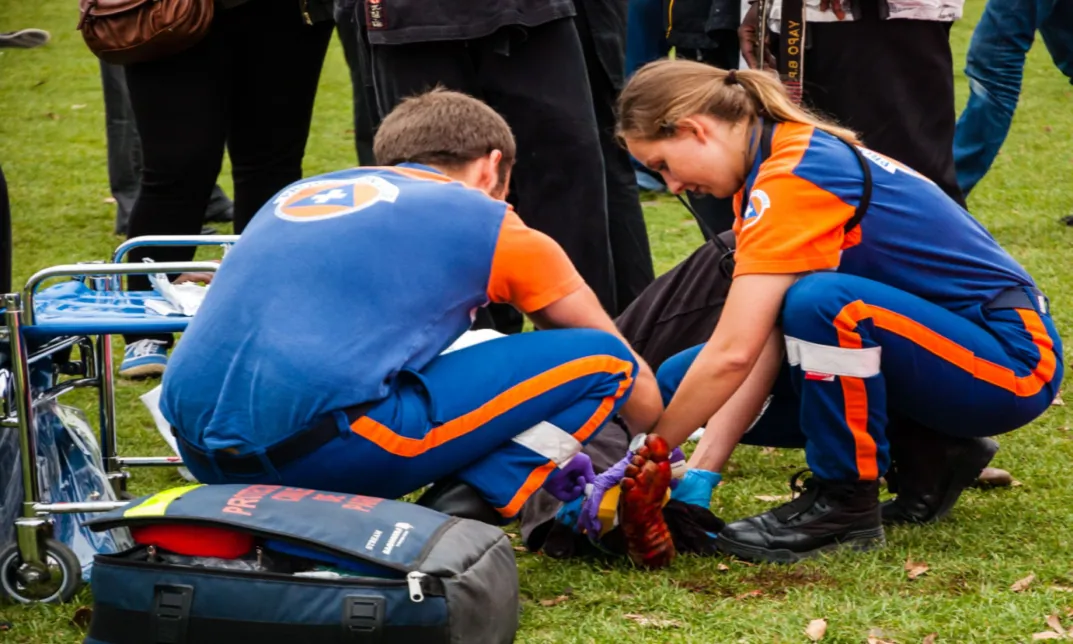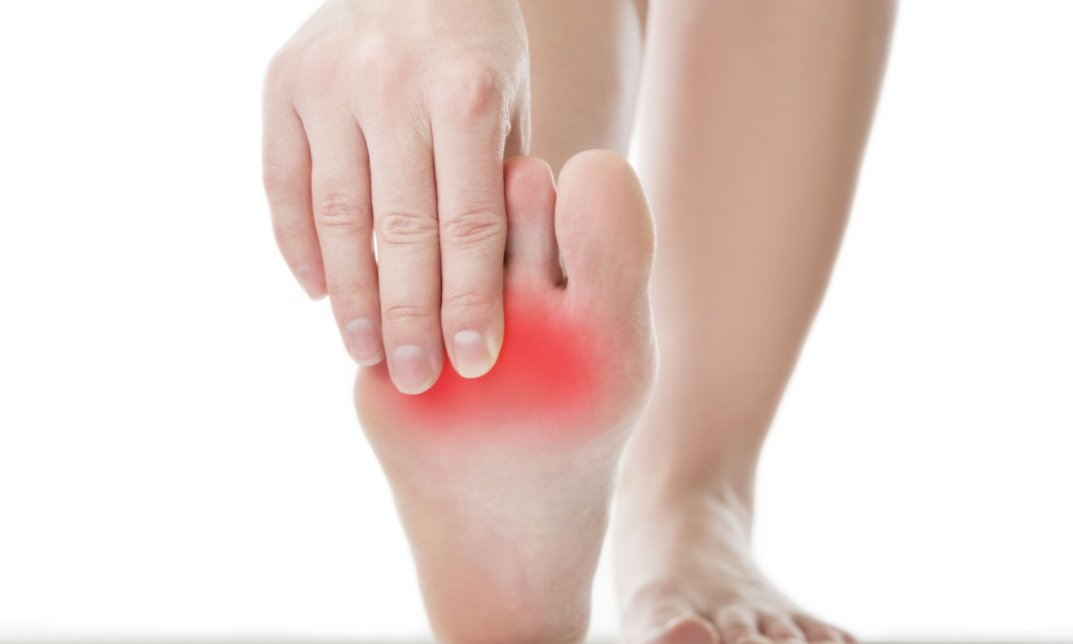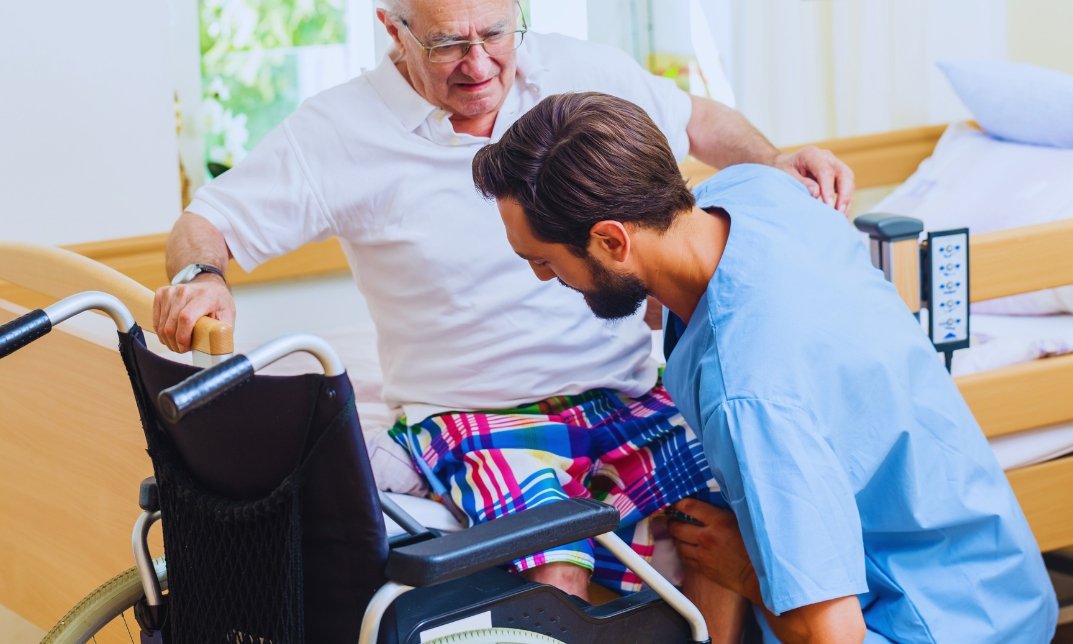No products in the cart.
RIDDOR keeps workplaces honest, safe, and accountable. You ask, what does RIDDOR stand for? It stands for Reporting of Injuries, Diseases and Dangerous Occurrences Regulations. This sits under RIDDOR 2013. You report serious work accidents, listed diseases, and set “near misses”. You follow clear deadlines. You keep records. You fix the causes. That’s the whole point.
What is RIDDOR? UK meaning, scope, and purpose

RIDDOR is UK health and safety law. It covers Great Britain. It involves the HSE, local authorities, and the ORR for rail. Search “RIDDOR rail” and “ORR RIDDOR reporting” for rail specifics. Northern Ireland uses HSENI RIDDOR. The law sets rules for reporting certain workplace incidents. Those reports help regulators spot risk trends. That insight drives guidance, visits, and safer work.
What Does RIDDOR Stand For?
RIDDOR expands to Reporting of Injuries, Diseases and Dangerous Occurrences Regulations. The long name tells the story. You report things that harm people at work. You cover injuries and diseases. You also cover dangerous occurrences. The word regulations means the duty sits in law. You must follow it.
Why did the UK create RIDDOR?
The UK wanted better data on harm at work. Good data improves decisions. Better decisions reduce deaths and injuries. RIDDOR feeds that loop. Your reports show where risks hide. Your action then reduces those risks. Everyone benefits, including your business.
Is this incident work-related? A quick test
Ask three quick questions.
- Did the way you did the job cause the incident?
- Did work equipment, a substance, or a tool play a part?
- Did the site or workplace conditions play a part?
- If you answer yes to any question, treat it as work-related. You then check if RIDDOR applies. If it does not, you may still record it. Use a RIDDOR decision tree to stay fast and fair.
What is reportable under RIDDOR?
You report only set types. The list below keeps things clear. Each item includes simple examples.
Death
You report any death caused by a work accident. You include non-workers. You also report if a worker later dies from that accident within one year. You act fast and follow the 10-day rule.
Specified injuries to workers
You report major but non-fatal injuries. The list includes fractures, except fingers, thumbs, and toes. You report amputations. You report sight loss or lasting sight reduction. You include crush injuries to the head or torso. You include serious burns. You include scalping that needs hospital treatment. You include loss of consciousness from a head injury or asphyxia. You include enclosed-space injuries that lead to resuscitation, heat illness, hypothermia, or a hospital stay over 24 hours. See RIDDOR Schedule 1 for detail.
- Examples: A worker breaks a wrist on a press brake. That fracture counts. A fingertip bruise does not. A chef burns 12% of their skin area. You report it. A small kitchen blister does not qualify.
Over-7-day injuries to workers
You report when a worker cannot do normal duties for more than seven days. Do not count the day of the accident. Do count weekends and bank holidays. You submit within 15 days. People still search “RIDDOR over 3 day”, but the rule now says seven.
- Example: A picker strains a back and returns after nine days. You report that case.
Injuries to non-workers
You report when a member of the public needs hospital treatment straight from the scene. A precautionary trip does not count. An X-ray with no treatment does not count. See the RIDDOR hospital treatment definition. Ask, “is x-ray treatment RIDDOR?” and apply the rule.
- Examples: A shopper slips, breaks an arm, and gets a cast. You report it. A student goes for checks only. You log it but do not report.
Occupational diseases
You report certain diseases when an RMP diagnoses them. The list includes carpal tunnel syndrome. It includes HAVS. It includes occupational asthma. It includes dermatitis. It includes tendonitis or tenosynovitis of the hand or forearm. Some cancers also fall in scope when linked to work exposure.
- Example: A joiner develops HAVS after years of tool vibration. The GP confirms it. You submit a disease report.
Dangerous occurrences (set near-miss events)
You report set serious near misses. The list covers many cases. It includes collapse or failure of lifts and lifting gear. It includes contact with overhead power lines. It includes uncontrolled release of dangerous substances. It includes serious electrical faults that cause fires or explosions. Search “RIDDOR construction lifting failure examples” for lift cases.
- Examples: Racking collapses after a forklift strike. You report it. A lift car drops due to a part failure. You report that case. A fume store vents due to a faulty valve. That also counts. Think “RIDDOR warehouse racking collapse” for similar calls.
Gas incidents
Gas suppliers and distributors have extra duties. Gas engineers must report unsafe appliances they find. Gas related injuries, loss of consciousness, or deaths drive urgent action and reporting. Do not delay.
RIDDOR reporting timescales and record keeping
Deadlines matter. You meet them or you risk action.
- Within 10 days: Report deaths, specified injuries, non-worker injuries that need hospital treatment, and dangerous occurrences.
- Within 15 days: Report over-7-day worker injuries.
- On diagnosis: Report listed occupational diseases once an RMP confirms them.
Keep clear records for at least three years. Track who, what, where, and when. Store action plans and photos. Keep logs secure. Control access. You may need those records for claims or checks. Write “RIDDOR 2013” in your procedure. Add the form name “F2508 form” for injuries and “F2508A disease” for diseases.
RIDDOR employer responsibilities and roles

Each workplace needs a responsible person. That person could be an employer, a site controller, or the self-employed. Line managers often start the process. Health and safety leads keep the system sharp. HR supports records and absence data. First aiders care for people and capture facts. Everyone plays a part. You set clear roles. You keep training live. You test the system with drills.
What is a RIDDOR report?
A RIDDOR report records a qualifying event. You submit the report online in most cases. You call for urgent cases. The report captures the time, place, and people involved. It describes the injury or disease. It explains activity, equipment, and conditions. It records the first actions taken. It gives the regulator a clear, short account. Use “RIDDOR vs accident book” in staff guides so people learn record vs report.
How do I submit a RIDDOR report? Step-by-step
Follow these steps for smooth compliance.
1. Make the scene safe and give first aid.
2. Decide if the incident is work-related.
3. Check if RIDDOR applies using the lists above.
4. Gather facts, photos, and witness details.
5. Submit the online form. Call if the case needs urgent notice.
6. Save the confirmation and share it with leaders.
7. Investigate the root cause. Use 5 Whys or a fishbone.
8. Fix the root cause. Set owners and dates.
9. Log the corrective actions and close them out.
10. You keep the process simple. You train people to act fast and act right. Share a RIDDOR checklist PDF with teams.
Coding health and social care RIDDOR reports
Health and social care settings add a twist. You still follow RIDDOR rules. You also code the report to the right activity. Use Government administrative functions, Education, Health as the main industry. Then pick human health activities, residential care, or non-residential social work. Choose a subactivity that fits the task, not just the site.
Examples (use these codes)
Scenario: Community nurse injures a shoulder during a home visit
- Code: Human health activities / Other
- Note: For trip scenarios, also see “RIDDOR schools trips”.
Scenario: Home carer strains a back while moving a client
- Code: Non-residential social work / Elderly, disabled
Scenario: Child chokes during lunch on a day trip
- Code: Non-residential social work / Child day-care
Avoid common errors (do this instead)
- Don’t code social care as Accommodation.
- Do pick Residential care activities / Residential nursing care when nursing is the main activity.
- Do pick Residential care activities / Elderly, disabled when care does not include nursing.
- Do code Ambulance services under Human health activities / Other.
Sector snapshots: construction, labs and education, retail and warehousing
- Construction: Lifting ops, MEWPs, scaffolds, and excavations can fail. You watch for collapse near misses. You manage power lines. You secure plant and tools. You report set failures and injuries. You record close calls and fix them fast.
- Labs and education: You face exposure to biological agents. You use fume cupboards and PPE. You train students and staff. You report confirmed occupational diseases. You also report dangerous releases and serious incidents. Search “RIDDOR laboratories biological agent examples” for case ideas.
- Retail and warehousing: Racking and MHE create crush risks. Public footfall raises slip and trip risk. You keep floors clean and marked. You train spotters for reversing trucks. You report public injuries that need treatment. You also report serious near misses.
Costs, time, risks, and alternatives
- Costs: Poor reporting costs real money. Claims grow. Premiums rise. Fines hurt. Downtime kills margin. Good reporting cuts repeat harm. Good fixes cut waste and delay.
- Time: Set a same-day rule for internal logging. Aim to submit within 48 hours for most cases. Keep the legal windows in mind.
- Risks: Under-reporting hides danger. Late reports draw heat. Bad coding skews your data. You then chase the wrong fixes.
- Alternatives and complements: RIDDOR sits beside your accident book. Near-miss systems plug gaps. Toolbox talks keep facts fresh. Risk assessments stop repeats. You can also use a simple mobile form. Staff then log events on the spot. Add a “when to record not report” line on your flow.
Tools and templates you can use
Keep it light but tight.
- A one-page decision tree for “report, record, or neither”.
- A short reporting checklist you can keep by phones and first aid kits.
- A simple incident log with date, time, site, task, injury, and action fields.
- A root cause form with space for 5 Whys.
- A corrective action tracker with owners and due dates.
- A one-pager on roles and duties for the responsible person, managers, and RMP notes.
- A short communication guide for informing staff after serious events. Add a RIDDOR examples table so people learn by seeing.
Scenario table: “Report or record?”
Here’s a cleaner, easier-to-scan single-column checklist—no tables, just consistent layout and spacing.
Customer trips on a curled mat and needs a cast
- Role: Non-worker
- Outcome: Fractured wrist
- Action: Report
- Why: Hospital treatment
Agency picker strains a back for nine days
- Role: Worker
- Outcome: Off work 9 days
- Action: Report
- Why: Over-7-day rule
Lift car drops due to a failed part
- Role: Workplace
- Outcome: No injury
- Action: Report
- Why: Dangerous occurrence
Chef gets a small blister treated with a plaster
- Role: Worker
- Outcome: Minor burn
- Action: Record
- Why: Not a specified injury
Student visits A&E for checks only
- Role: Non-worker
- Outcome: No treatment
- Action: Record
- Why: Precaution only
Engineer touches an overhead line with a MEWP
- Role: Worker
- Outcome: No injury
- Action: Report
- Why: Set near-miss
Operative suffers asthma diagnosis due to flour dust
- Role: Worker
- Outcome: Confirmed disease
- Action: Report
- Why: Occupational disease
Forklift clips racking and the bay falls
- Role: Workplace
- Outcome: No injury
- Action: Report
- Why: Structure collapse
Admin breaks a finger closing a drawer
- Role: Worker
- Outcome: Finger fracture
- Action: Record
- Why: Finger fractures exempt
Contractor loses consciousness after a head knock
- Role: Worker
- Outcome: Unconscious
- Action: Report
- Why: Specified injury
Common exceptions you should know
Road traffic accidents on public roads usually sit outside RIDDOR. Medical treatment without an injury does not trigger a report. Purely clinical events do not count as work-caused incidents. Minor cuts and small sprains remain in your accident book. You still record and learn from them.
Practical examples of good info to capture
Gather the task being done, not just the job title. Capture the tool or substance in play. Note site conditions like floor state or lighting. Record PPE used. Take photos of the area and equipment. Log witness names and short accounts. Keep times for care, calls, and submissions. Good data helps your fixes land.
Simple metrics you can track each month
Track over-7-day cases. Track time to submit. Track time to close actions. Watch the near miss ratio. Monitor repeat events by site, task, and shift. Review trends in your safety meetings. Add LTIFR UK and DART rate to your dashboard. Share wins and lessons. People then buy into the system.
Frequently Asked Question (FAQs)
1. When did RIDDOR last change?
- The current version started in 2013. You still follow that set.
2. Does RIDDOR apply to the self-employed?
- Yes. If you control the work or site, you carry duties.
3. Do bank holidays count in the seven days?
- Yes. You count calendar days, not work days.
4. Who files the report when contractors work on site?
- The responsible person on site should act. Agree this in contracts and inductions.
5. Do I report stress?
- People ask, “is stress reportable under RIDDOR?” Stress alone does not sit in the list. A confirmed disease tied to work can still trigger a report.
6. Do I report every hospital trip?
- No. You report when the hospital gives treatment. Checks only do not count. People also ask, “is COVID reportable under RIDDOR?” Follow current HSE guidance.
7. How long should I keep records?
- Keep them for at least three years. Longer can help for claims or patterns.
8. Will the HSE visit after I submit?
- They may contact you. They may visit. Good records and clear actions help.
RIDDOR employer responsibilities: pull it all together
Set a clean process. Train people to use it. Give a simple flow for decisions. Log every event on the day. Submit accurate reports within the set windows. Investigate root causes. Fix them and track actions. Review the data and improve the system. Lead by example and reward good reporting.
Summary: the main point, one more time
Theres your answer to “what does RIDDOR stand for?”. RIDDOR protects people and businesses. You report set events on time. You keep solid records. You learn and fix the causes. That is how you reduce harm and cost. That is how you stay compliant in the UK.
Start learning with the School Of Health Care
Boost your skills and your team’s confidence. Enrol in our online personal development courses and our professional development courses at School Of Health Care. Build practical skills. Learn clear steps. Turn legal duties into daily habits. Join today and move your workplace forward.






